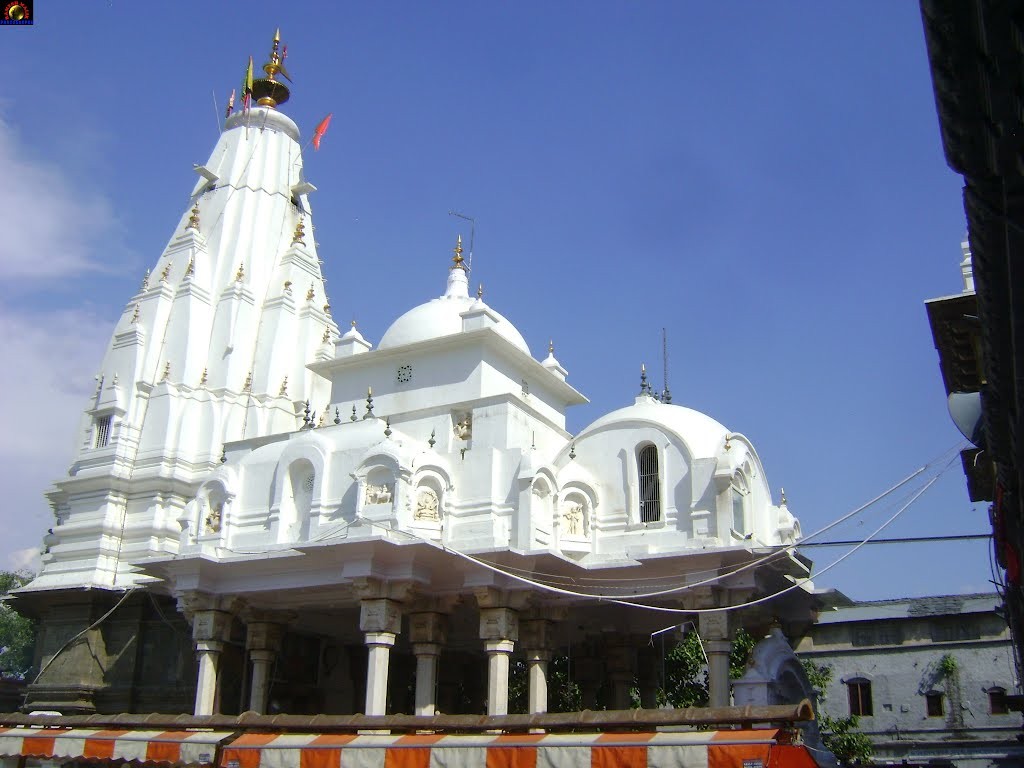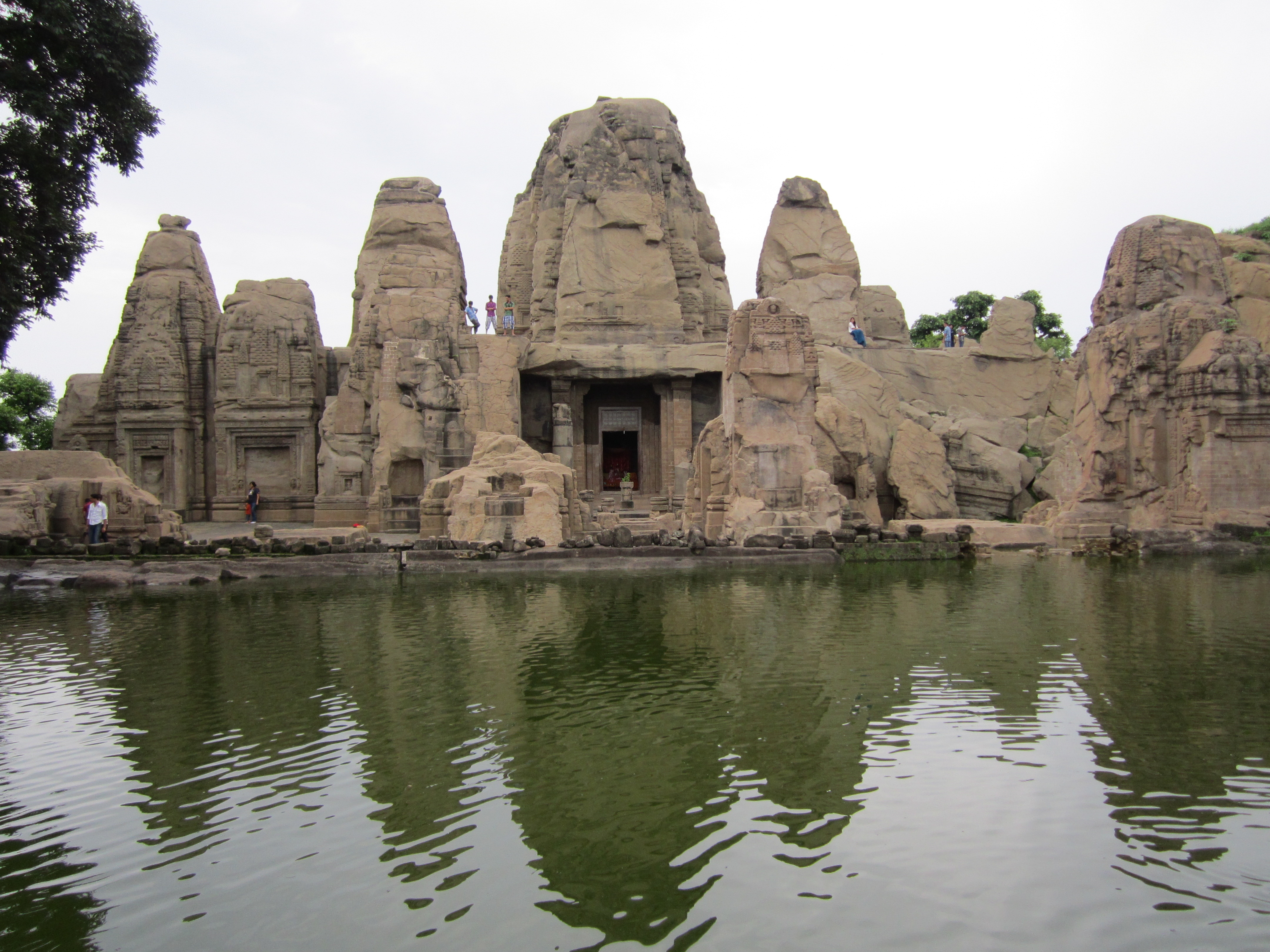Kangra: Valley of Temples and Emerald Greenery
Even if you are an atheist you will become religious when you are at Kangra. There are nine temples in this Himalayan city and each one attracts both pilgrims and tourists. When we visited Kangra last year, we hired a guide. He was a nice guy who kept us amused with interesting anecdotes from history.
Kangra is a town in Himachal Pradesh famous for its temples (there are nine of them) and picturesque green valleys. It is also one of the most famous districts in Himachal Pradesh. Visit once and the beautiful landscape will remain etched in your memory.

Vajreshwari Temple in Kangra: The wealth of this temple attracted several plunderers including Mahmud of Ghazni. The temple complex that we see today was built in the 20th century after an earthquake destroyed the original temple.
Visiting Kangra, the emerald green valley in Himachal Pradesh, is an unforgettable experience. The winding roads have steep ascents. And if you look out of the bus, the unfathomable depths on either side of the roads will take your breath away. It takes about 9 hours to reach Kangra from Delhi by road, but you will enjoy every moment of this journey. Wherever you look, you will find emerald greenery. Kangra is about 470 kms from New Delhi. There are no direct trains or flights from Delhi to Kangra. Government buses connect Kangra with all major cities in Himachal Pradesh and neighboring states.
Tea gardens
You cannot express the beauty of Kangra in words. You need to see it yourself. Kangra is known for its tea plantations. Before coming here I thought that tea gardens were only found in Kerala and Assam. I was wrong. Kangra has plenty of them. Tea cultivation in this town was started by the British.
Chief attractions of Kangra
The fort and the temples are the major attractions.
Kangra Fort
The Kangra Fort attracts tourists from all over India and the world. The fort and its surroundings remain cool even at noon. It is not surprising, though. You are standing at a height of about 2400 feet.
The Kangra Fort is about 20 kilometers from Dharamsala. This fort must be at least 2400 years old because it has been mentioned in the war records of Alexander the Great who raided India in the 4th century BC.
The Kangra Fort is believed to have been built by the royal Rajput family of Kangra. They claim descent from the ancient Trigarta Kingdom mentioned in Mahabharata. The Kangra Fort is the largest fort in the Himalayas. It is also the oldest in India. The fort suffered major damages in an earthquake in 1905. The then British Government carried out extensive renovations and repairs but the Fort is largely in ruins today; still, it has an irresistible charm to it.
The fort is built at the confluence of Banganga and Majhi rivers. It is one of the most beautiful forts in India. There are regular bus services from Kangra bus stand to the fort. Dharmasthala where Dalai Lama resides is about 2 hours’ drive from Kangra.
Temples of Kangra

Masroor Rock Cut Temples: These rock cut temples are believed to have been built by Pandavas. According to legends, they lived in Kangra during their ‘incognito’ exile and started building the temples. However, they left this area before finishing the construction when their identity was exposed. That explains the unfinished state of the temples.
The Jayanti Mata temple which stands on a hill top is in old Kangra. In addition to the fort, Kangra is famous for its nine temples. The Masroor Rock Cut Temple, which is often called Himalayan Pyramids, is here. It is likely to be declared as a UNESCO World Heritage Site. It is believed to have been built by the Pandavas. Other famous temples include the Jawalaji Temple, Chamunda Devi Temple, Vajreshwari Devi temple, Chintapurni temple and Baijnath temple. Both tourists and devotees flock to these temples.
Vajreshwari Temple at Kangra
The Vajreshwari Temple dedicated to Goddess Gurga is the most famous of these temples. The wealth accumulated in this temple made it the target of many plunderers. In AD 1009, Mahmud of Ghazni looted this temple and took away huge quantities of gold, silver and jewellery. The temple was again looted in AD 1360 by the Tughlaq rulers of the Delhi Sultanate.
Best time to visit
Summers (April to June) are mild and winters (November to February) are cold in Kangra. The region receives rainfall between July and September. The best time to visit is between March and June.